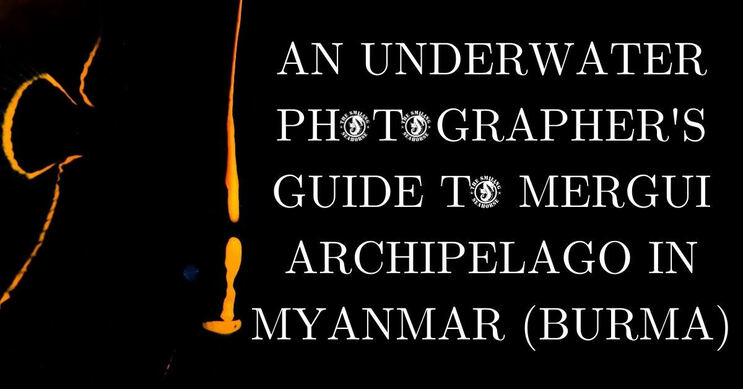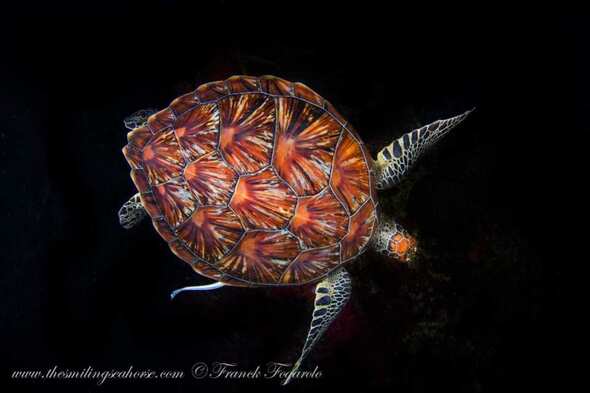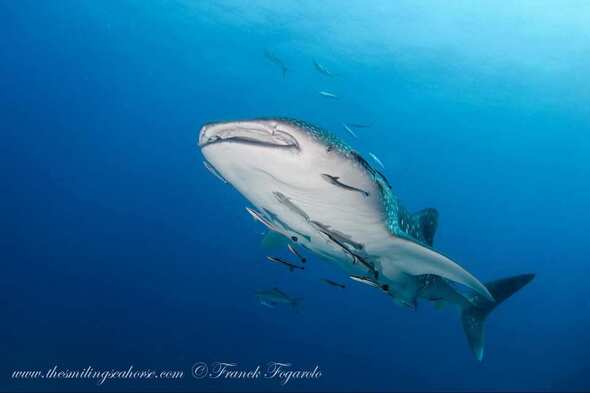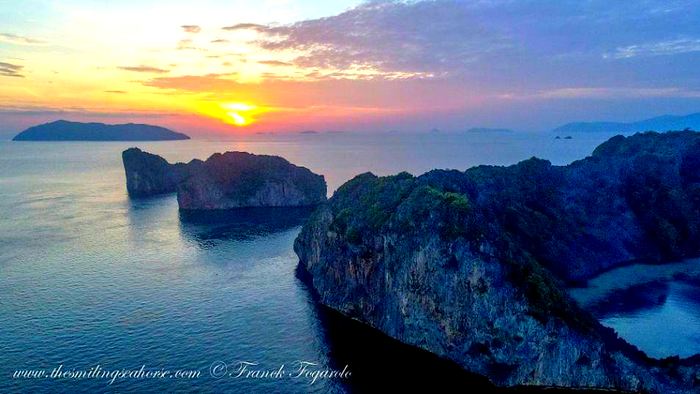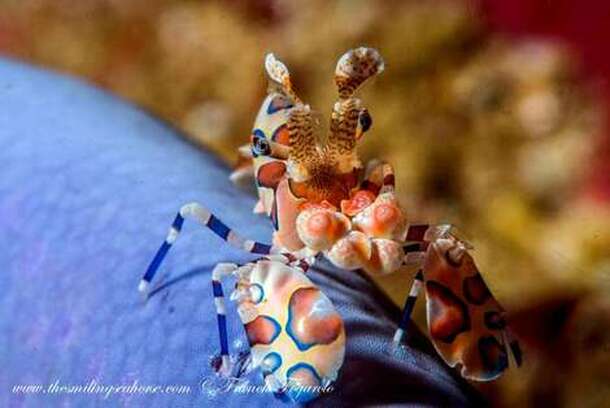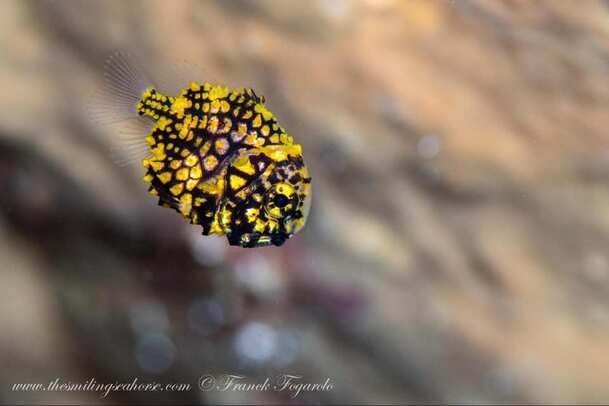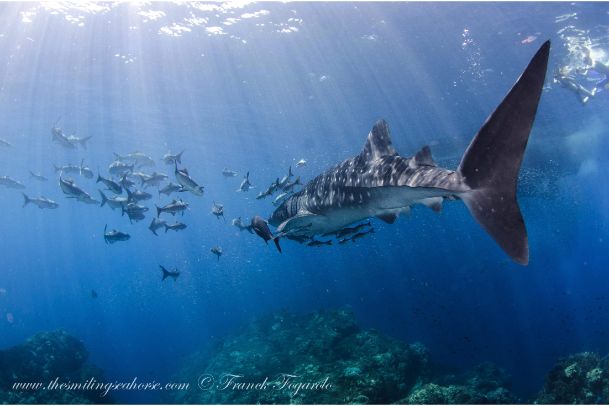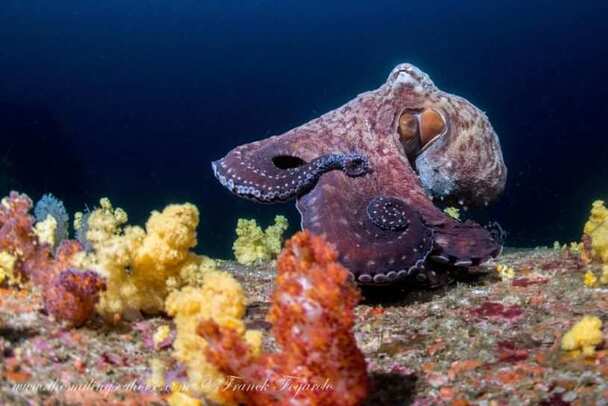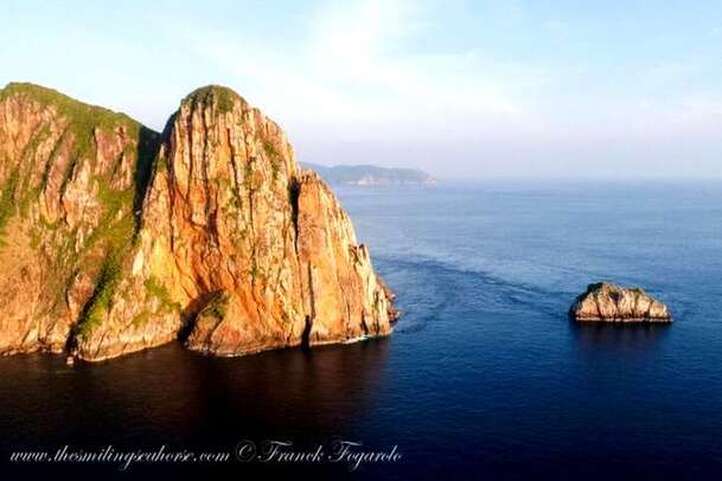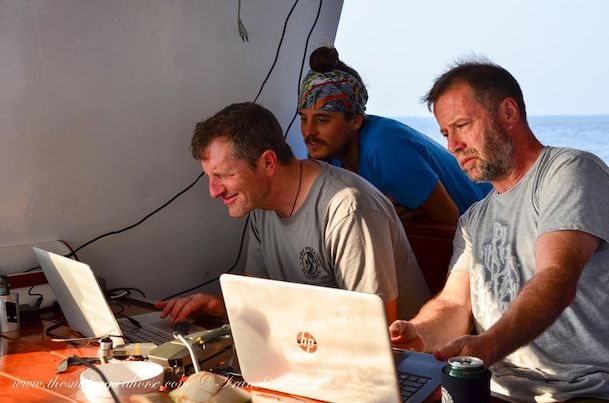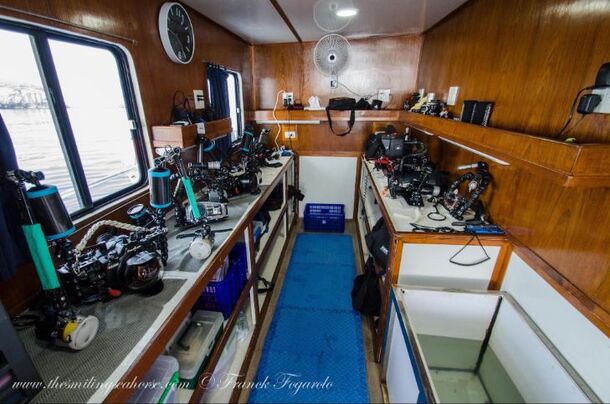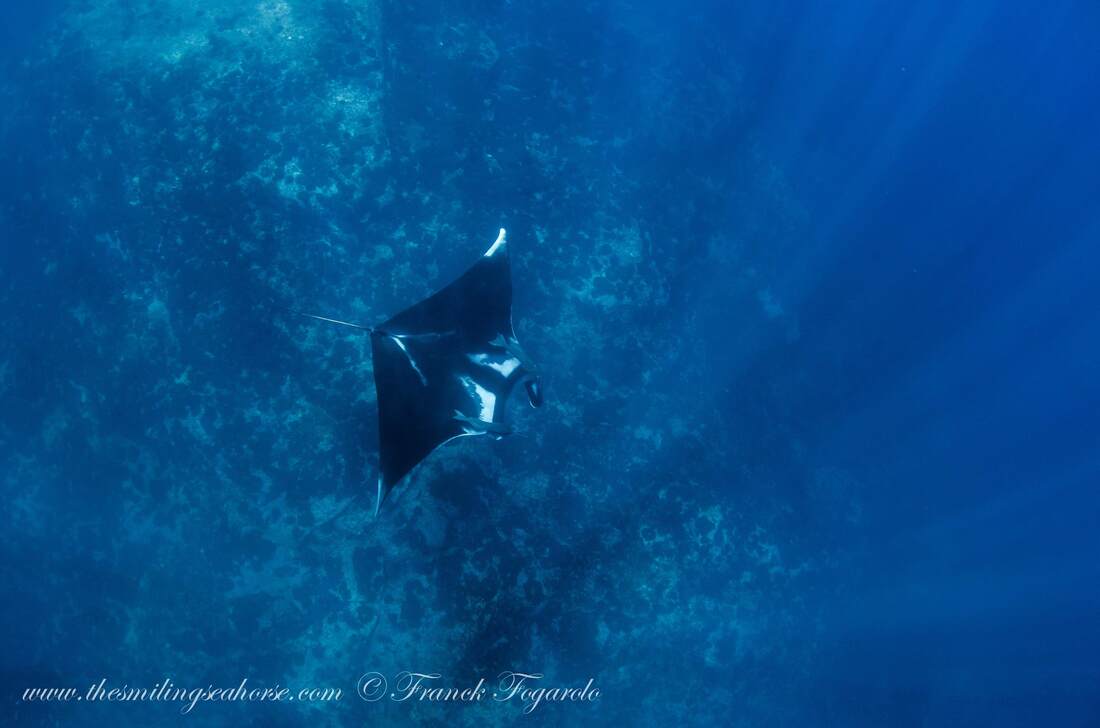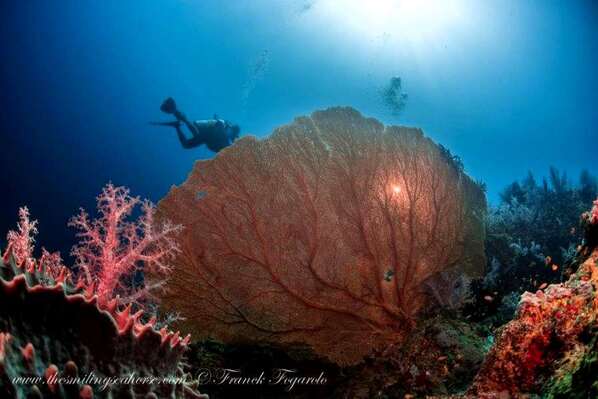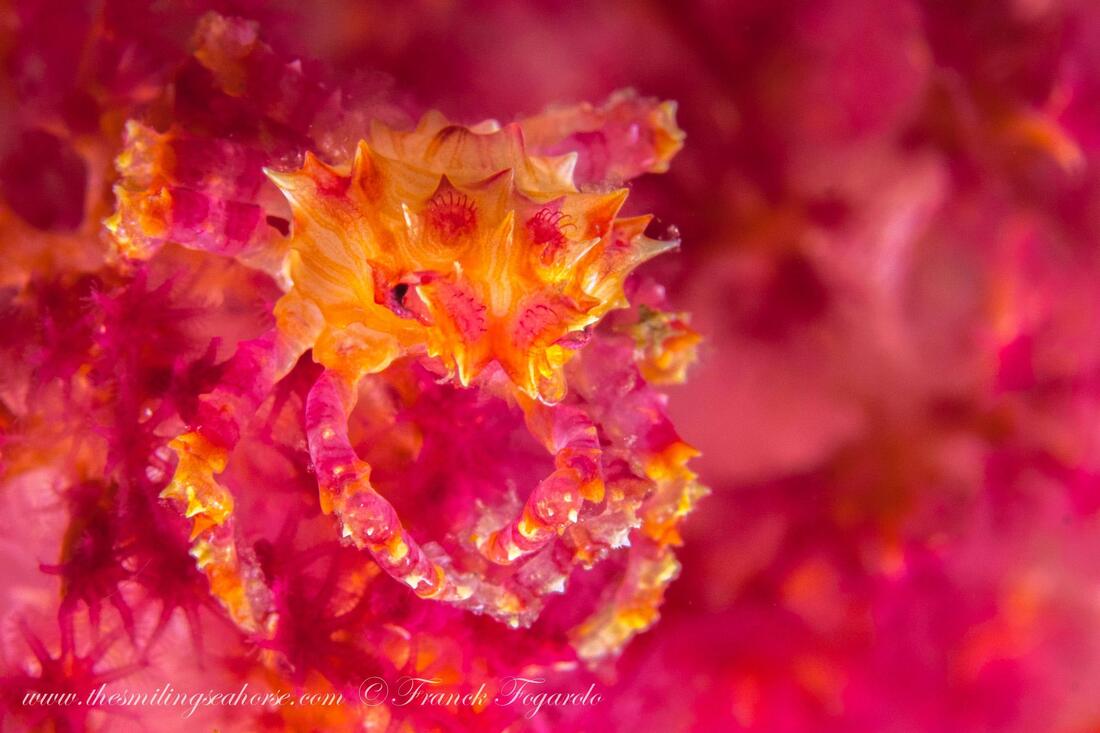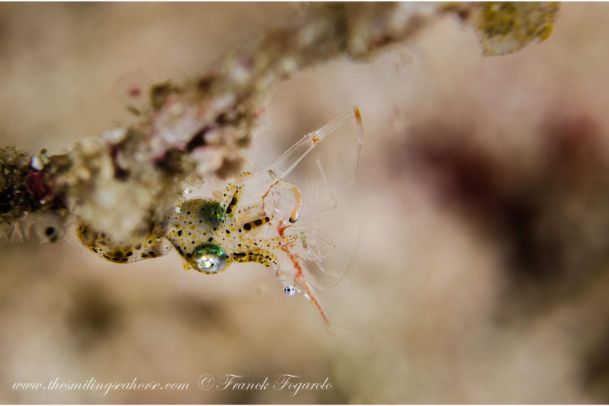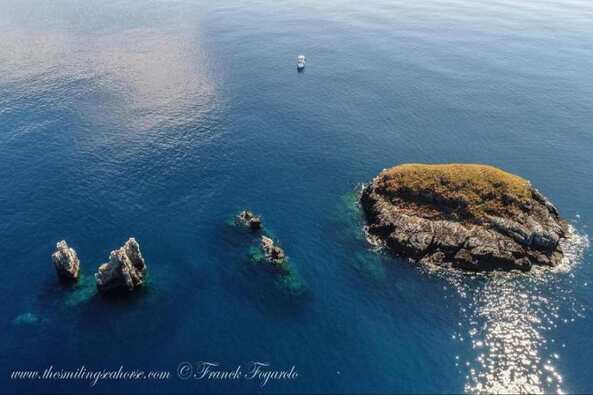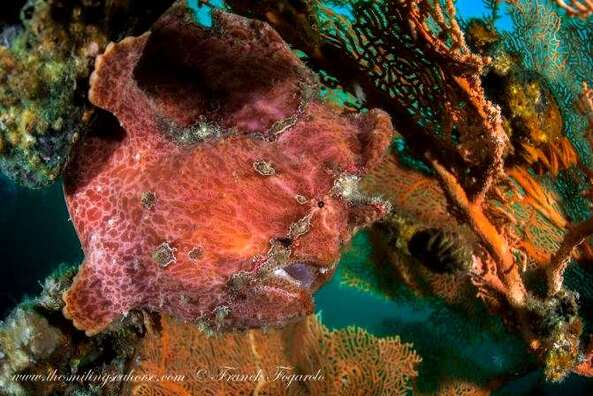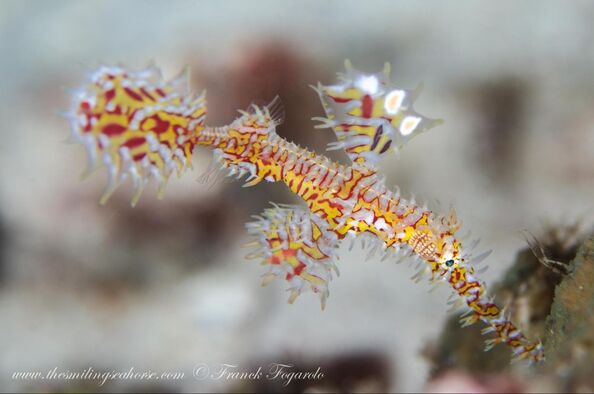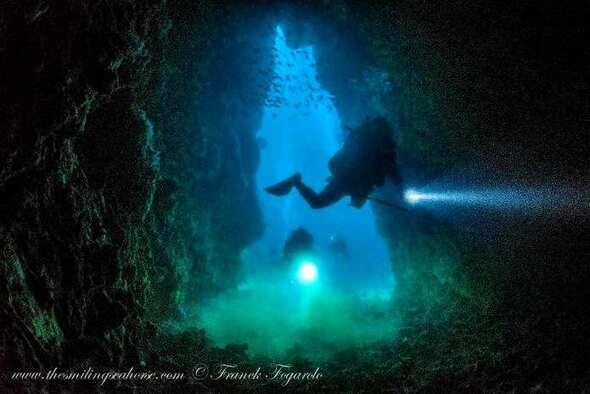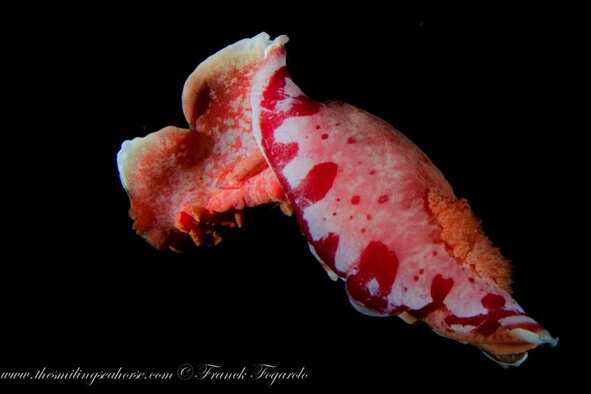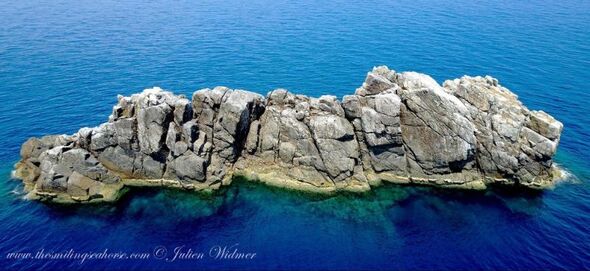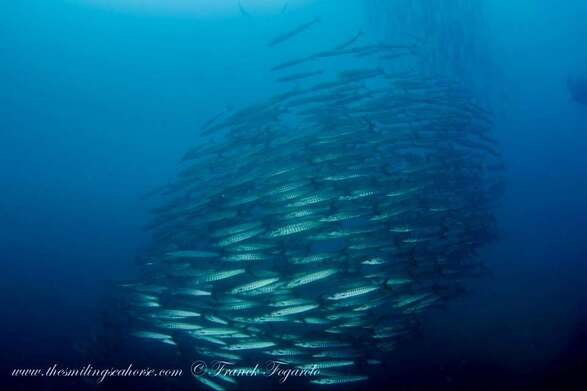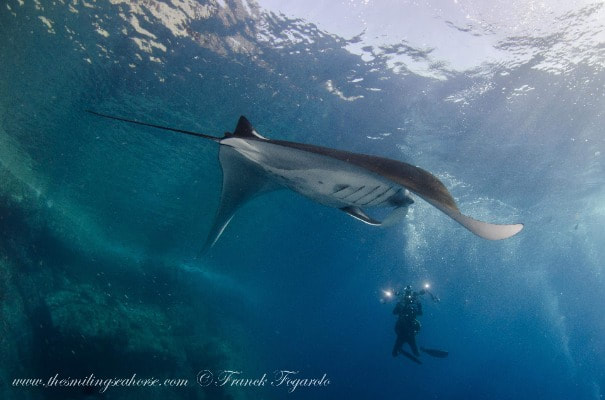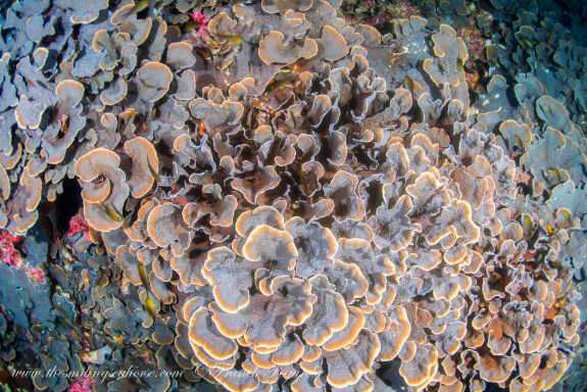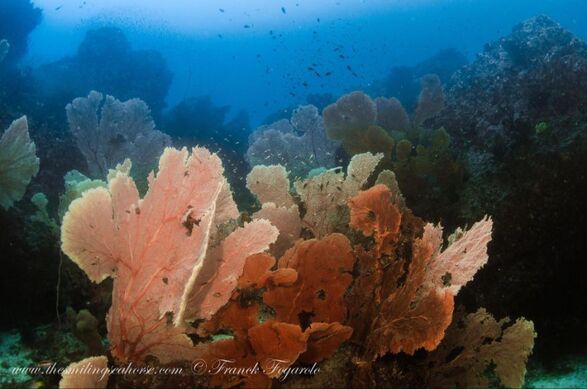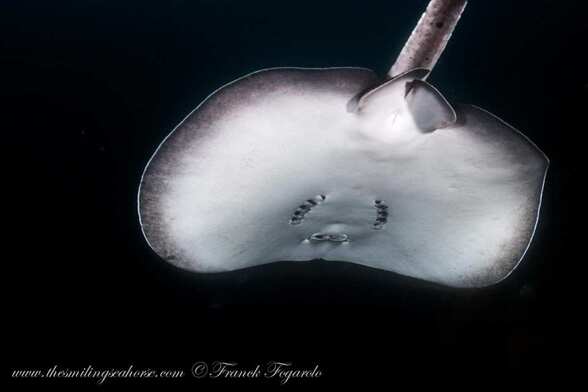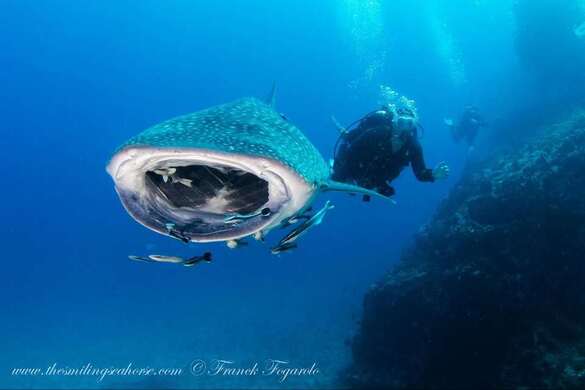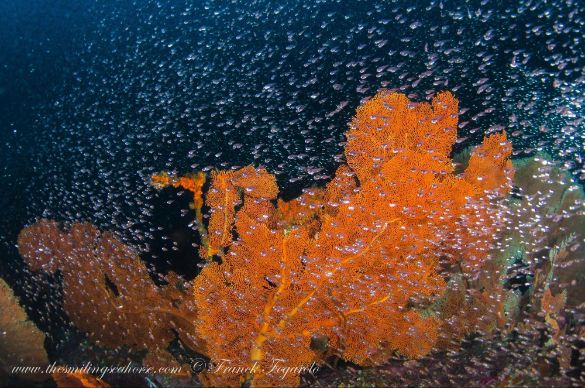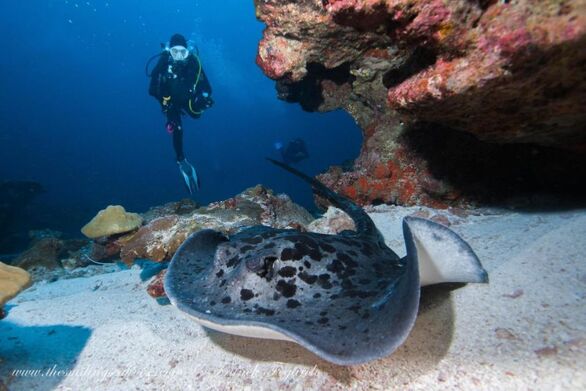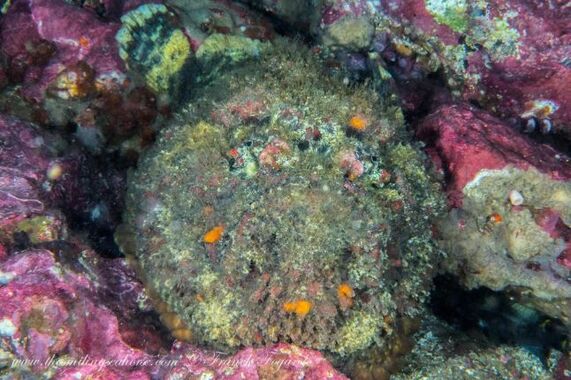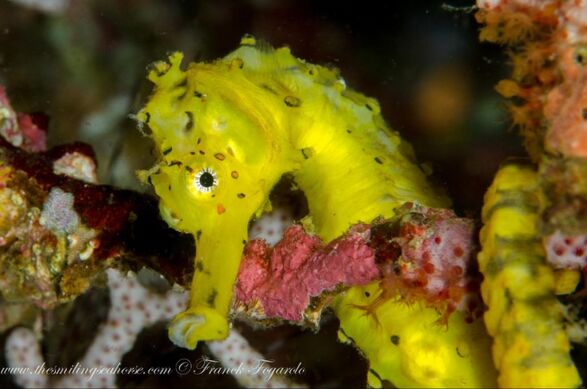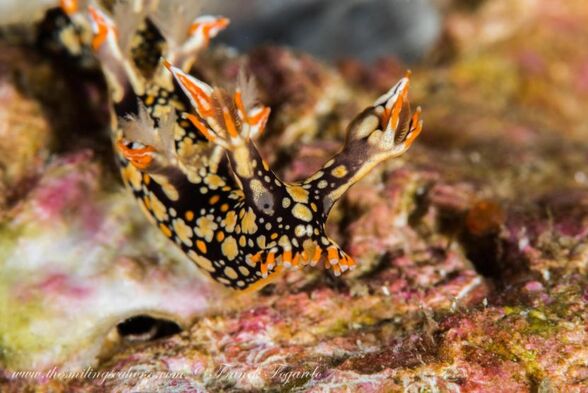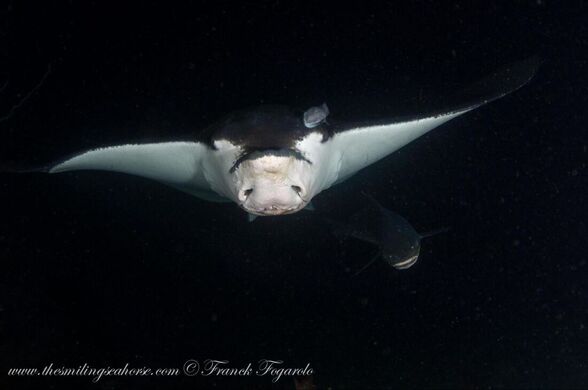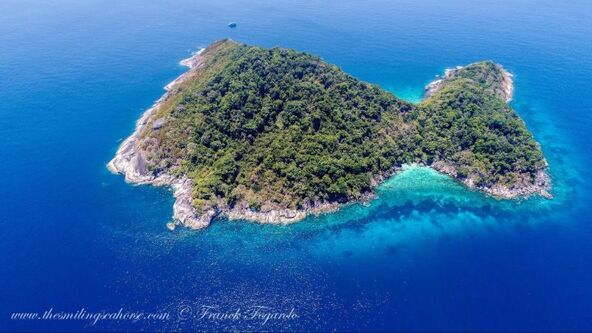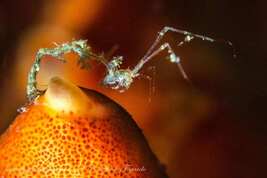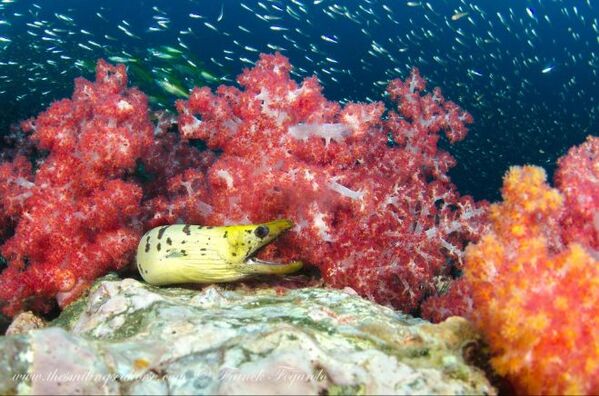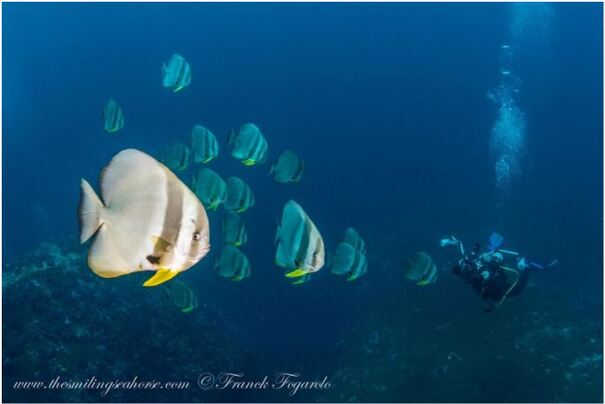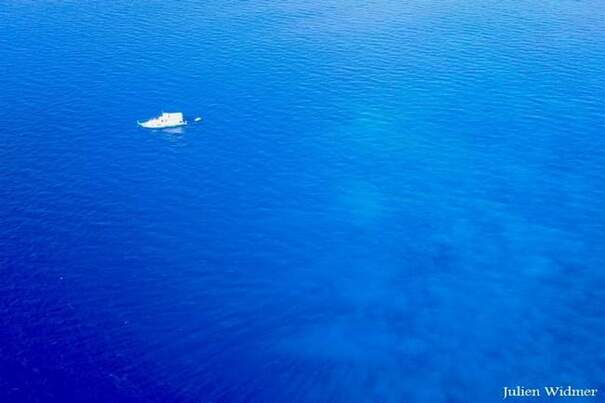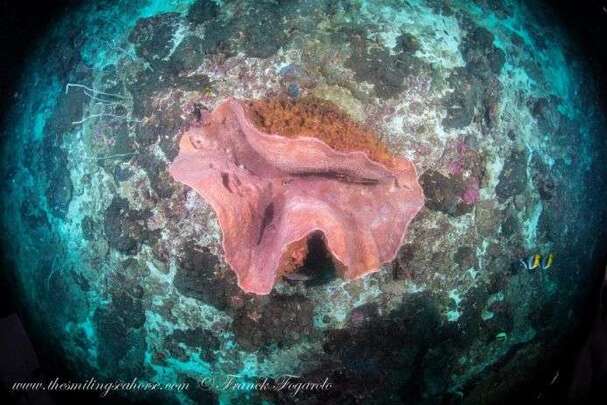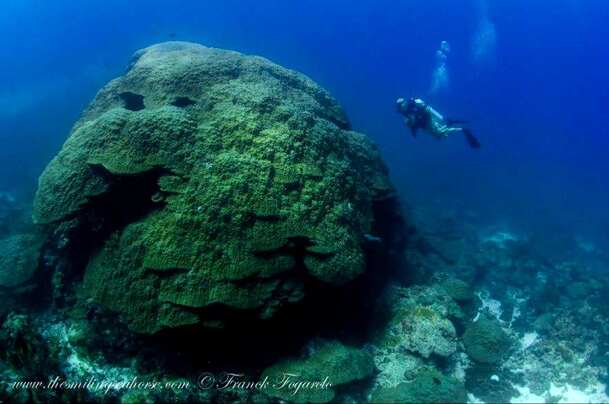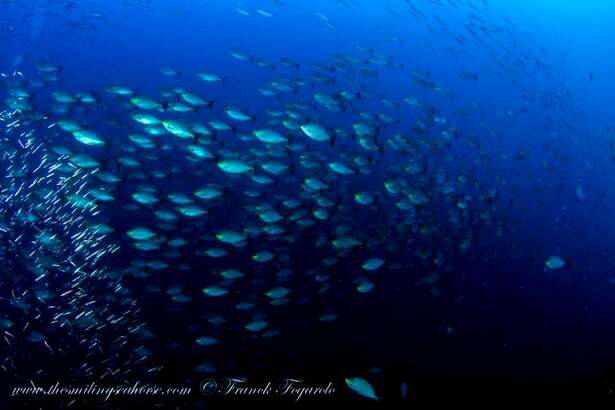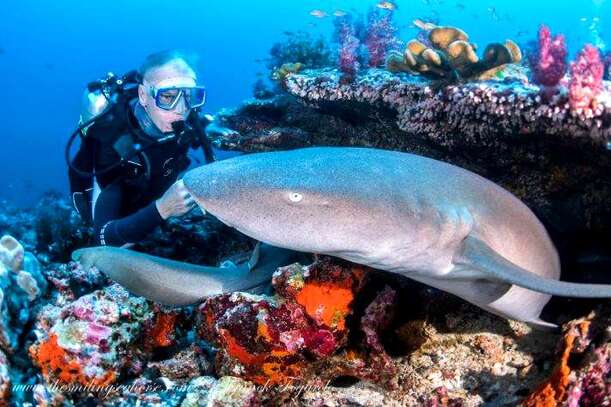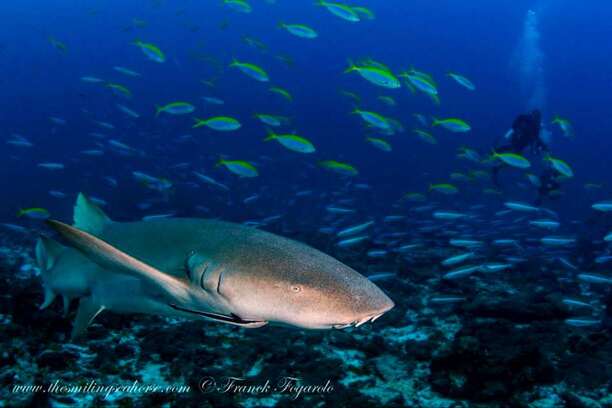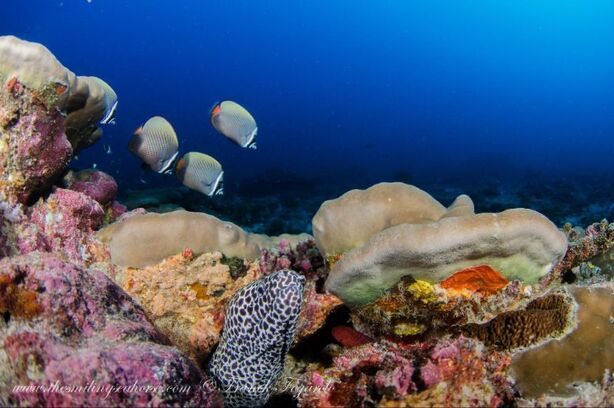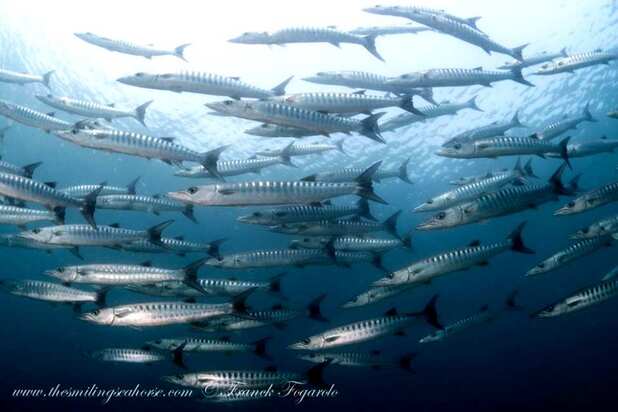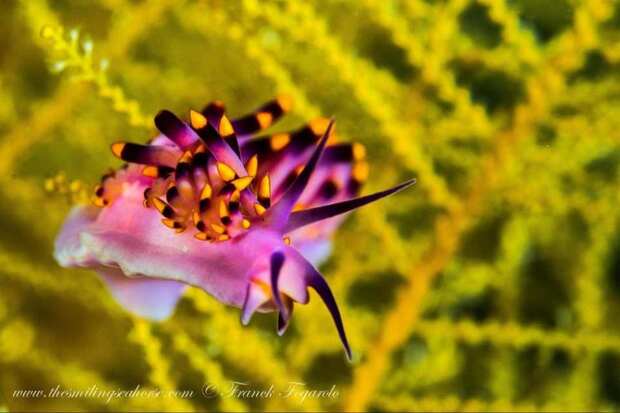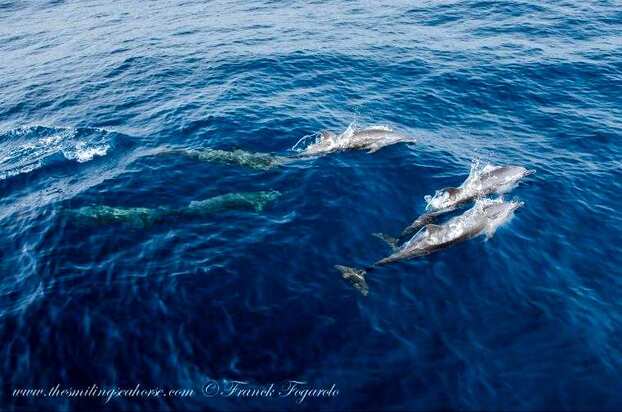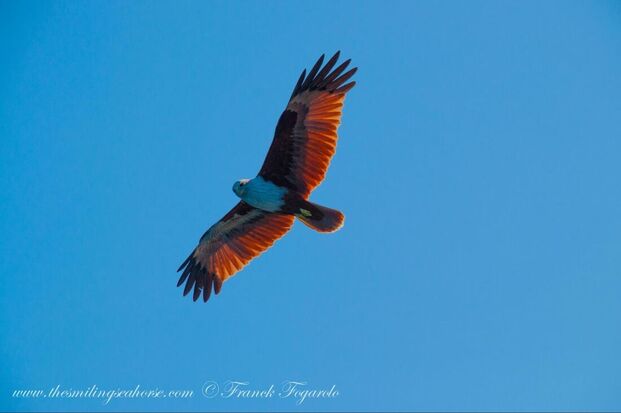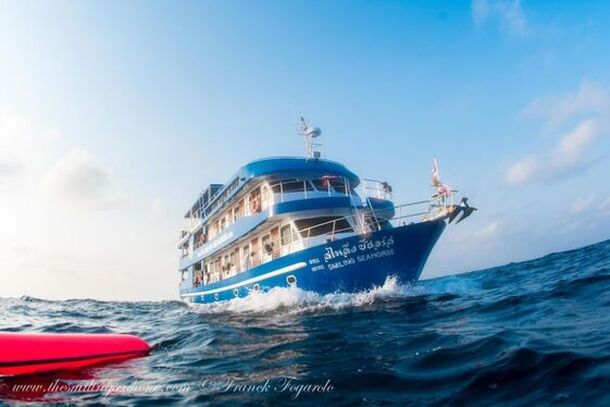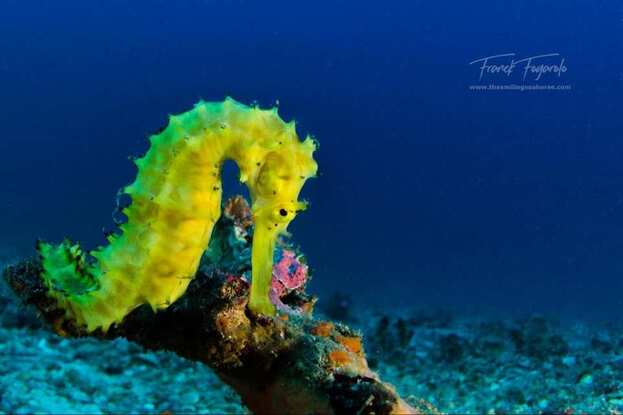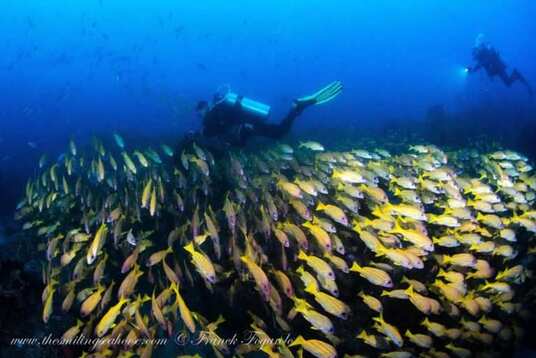An Underwater photographer’s ultimate guide to the Mergui Archipelago
Mergui Archipelago: Myanmar's diving destination
After a long surface interval where you finally found the time to finishing editing your full SD cards, do you feel like getting away for a few days? Would you like to leave the mainland for exciting ocean adventures? Myanmar reveals marine wonders most sought after by divers and underwater photographers. Located in Southeast Asia, the Mergui Archipelago will amaze you with a variety of sea life of all sizes making stylish appearances at different sites such as Western Rocky, Black Rock, and many others!
Let’s dive in the heart of the Mergui Archipelago
An undiscovered paradise in the Indian Ocean, the Mergui Archipelago is the home of 800 islands surrounded by immaculate reefs and pinnacles bustling with life. Along with the abundance of gorgeous scenery and impressive marine life, one of the reasons we love this area so much is its air of exclusivity. Particularly appealing for a photographer, our boat rarely crosses paths with another while we cruise the crystal clear seas, and being alone on the dive sites make it so you will never get an unwanted photobomber finning through your frame.
As your research has concluded, the best way to reach these coveted dive spots far from the clutches of civilization is on a liveaboard dive cruise with The Smiling Seahorse. Now that you’ve made the decision to embark on a magnificent adventure with us, you need to think about how to best prepare yourself.
As photography enthusiasts, we understand that while regular divers also want to be well prepared for a cruise, photographers have many extra things to consider when getting ready for a once in a lifetime trip such as this. We have compiled this one-stop, all you need to know guide for underwater photographers diving in Burma to put your mind at ease...
As your research has concluded, the best way to reach these coveted dive spots far from the clutches of civilization is on a liveaboard dive cruise with The Smiling Seahorse. Now that you’ve made the decision to embark on a magnificent adventure with us, you need to think about how to best prepare yourself.
As photography enthusiasts, we understand that while regular divers also want to be well prepared for a cruise, photographers have many extra things to consider when getting ready for a once in a lifetime trip such as this. We have compiled this one-stop, all you need to know guide for underwater photographers diving in Burma to put your mind at ease...
What subjects should I expect to find in the Mergui Archipelago?
Whether you want to photograph things so tiny your eyes cant perceive the details or you want to hover in the blue surrounded by schools of fish, you are sure to find everything your diver’s heart yearns for in Burma.
We commonly see macro life such as various types of shrimps and crabs, nudibranchs, cowries, flatworms and sea slugs of every size texture and color. Search for seahorses, pipefish, frogfish and many other types of coral dwelling animals. Some of the most popular and curious species include the ghost pipefish and harlequin shrimp.
We commonly see macro life such as various types of shrimps and crabs, nudibranchs, cowries, flatworms and sea slugs of every size texture and color. Search for seahorses, pipefish, frogfish and many other types of coral dwelling animals. Some of the most popular and curious species include the ghost pipefish and harlequin shrimp.
We can also regularly spot many types of moray eel, sneaky scorpion and stone fish, cephalopods like octopus and cuttlefish, huge groups of predatory schooling fish and every variety of tropical fish under the sun.
Larger species are also not hard to come by here and are always exciting to spot. We can find various rays from shy bottom dwelling species like the marble ray to the majestic nomadic manta ray. Cobia, barracuda, many types of sharks including lazy nurse sharks and of course the coveted whale shark are all likely to make an appearance at one of our many impressive dive sites.
Larger species are also not hard to come by here and are always exciting to spot. We can find various rays from shy bottom dwelling species like the marble ray to the majestic nomadic manta ray. Cobia, barracuda, many types of sharks including lazy nurse sharks and of course the coveted whale shark are all likely to make an appearance at one of our many impressive dive sites.
All these beautiful species will dance and bustle across a breathtaking backdrop at every stop. Most of the reefs are made up of granite or limestone and have very interesting topographies. Explore the magnificent rock formations, ancient coral heads and spacious swim throughs with light artistically streaming through the gloom. The coral species are also quite diverse although we predominantly find vibrant gardens of soft corals and sponge in the majority of the archipelago.
Diving conditions in Mergui Archipelago:
|
Our season in Burma runs from October until May. This part of the world gets hammered by monsoon rains and strong winds in the off months making it too dangerous to navigate the seas, but the rest of the year we dive the calm clear waters under a rarely obstructed sun and a light refreshing sea breeze. |
Water temperatures are fairly consistently in the pleasant range of 27°C to 30°C and visibility usually ranges from 10-40m depending on the site and the luck of the day. Turbidity is usually minimal and will allow you to get some great perspective through your wide-angle lens but on the off days, you may want to spend more time up close and personal with the reef and your macro lens.
Currents are always something to be mindful of in Burma. Some of the most interesting sites like the Burma Banks are very exposed and can be a real humbling display of the strength of the ocean but many areas offer more sheltered and favorable conditions to patiently await the right moment to click on the shutter. Due to the topography of the sights we don’t experience up or down currents and the risk of being swept away from the site is minimal. Although if ever mistakes are made or you can’t help yourself from pursuing a school of fish out into the blue, just shoot up your SMB and the boat will come to collect you from wherever you surface. The 6-hour tidal currents are very predictable and with the expertise of the crew, we will be sure to ride them in the safest way possible.
To best be able to predict the strength of the currents during your holiday, we can refer to the phase of the moon which dictates the ferocity of water movement that week. During the Full or new moon, we will experience stronger currents and the mid-moon cycle usually brings much softer relaxed conditions. Keep in mind that whereas strong current conditions can be more technical they also often bring the opportunity to spot larger marine life species like whale sharks and manta rays.
The ideal starting point for your adventure is departing from Ranong, Thailand. This city is easily accessible from all major Thai cities and is preferred by most over entering Myanmar through the city of Kawthaung in the south.
Ranong has a domestic airport with 3 daily flights from Bangkok at the time of writing this article and it is only 300km north of Phuket international airport.
Currents are always something to be mindful of in Burma. Some of the most interesting sites like the Burma Banks are very exposed and can be a real humbling display of the strength of the ocean but many areas offer more sheltered and favorable conditions to patiently await the right moment to click on the shutter. Due to the topography of the sights we don’t experience up or down currents and the risk of being swept away from the site is minimal. Although if ever mistakes are made or you can’t help yourself from pursuing a school of fish out into the blue, just shoot up your SMB and the boat will come to collect you from wherever you surface. The 6-hour tidal currents are very predictable and with the expertise of the crew, we will be sure to ride them in the safest way possible.
To best be able to predict the strength of the currents during your holiday, we can refer to the phase of the moon which dictates the ferocity of water movement that week. During the Full or new moon, we will experience stronger currents and the mid-moon cycle usually brings much softer relaxed conditions. Keep in mind that whereas strong current conditions can be more technical they also often bring the opportunity to spot larger marine life species like whale sharks and manta rays.
The ideal starting point for your adventure is departing from Ranong, Thailand. This city is easily accessible from all major Thai cities and is preferred by most over entering Myanmar through the city of Kawthaung in the south.
Ranong has a domestic airport with 3 daily flights from Bangkok at the time of writing this article and it is only 300km north of Phuket international airport.
What photo specific amenities are available to me on the MV SMiling Seahorse?
There are always many factors you need to consider before choosing the best liveaboard vessel for you, and this is especially true if your goal is to snap the best photos during your trip.
One of the pride and joys of the diving deck aboard the MV Smiling Seahorse is the camera room. As our cruise director Franck is a photographer himself, he put his knowledge of what our onboard artists need into the flawless design of this space.
The room is naturally lit and bright and has plenty of counter space to make sure you aren’t ever bumping elbows with your neighbor during setup. Above and below the work counter is ample storage for everyone to stow away the lenses they won’t be using on today’s dives. There is a specific dunk tank for electronics as well as numerous power outlets within arm’s reach from any section of the room. You also have an expert at your disposal who will be happy to help you with any questions about appropriate settings or lenses.
In the common area, we have a television and a sound system where you can flip through photos as a group or watch your edited footage of whatever magnificent creatures you saw. You can also set yourself up at any of the dining tables or on the comfy couch to edit. There are outlets everywhere and the open-air deck will help inspire you as the breeze blows through it. Not to worry if the weather gets a bit wet, we have heavy-duty curtains to pull down so that you can stay dry even in the angriest rainstorm. If you prefer to edit in solitude, every cabin has numerous outlets so that your computer will never go flat mid upload.
One of the pride and joys of the diving deck aboard the MV Smiling Seahorse is the camera room. As our cruise director Franck is a photographer himself, he put his knowledge of what our onboard artists need into the flawless design of this space.
The room is naturally lit and bright and has plenty of counter space to make sure you aren’t ever bumping elbows with your neighbor during setup. Above and below the work counter is ample storage for everyone to stow away the lenses they won’t be using on today’s dives. There is a specific dunk tank for electronics as well as numerous power outlets within arm’s reach from any section of the room. You also have an expert at your disposal who will be happy to help you with any questions about appropriate settings or lenses.
In the common area, we have a television and a sound system where you can flip through photos as a group or watch your edited footage of whatever magnificent creatures you saw. You can also set yourself up at any of the dining tables or on the comfy couch to edit. There are outlets everywhere and the open-air deck will help inspire you as the breeze blows through it. Not to worry if the weather gets a bit wet, we have heavy-duty curtains to pull down so that you can stay dry even in the angriest rainstorm. If you prefer to edit in solitude, every cabin has numerous outlets so that your computer will never go flat mid upload.
What photography gear will I need?
During your cruise in the Mergui Archipelago you will have the chance to visit the most unspoiled dive sites in the area that will showcase a variety of seascapes and marine life. This can be a bit of a headache when it comes to gear as you want to be prepared to capture as much as you can while considering ease of travel and luggage fees.
If you must travel light you may consider a digital compact camera and underwater housing. This can be tucked into your carry on without taking up too much space and is also much easier to carry during a dive with strong currents. These convenient devices usually have built-in underwater settings and can be paired with a variety of attachments to achieve different goals. For example, as these are great for close up shots a wet wide-angle lens can be very useful to attach to your housing if you wish to capture larger animals or big schools of fish.
If you are more of a pro, the best-case scenario is a DSLR or mirrorless camera, equipped with both a 60mm or 105mm macro lens and a 10-17mm or 10.5mm wide-angle lens. Having both will allow you to choose which lens is more suitable for your target subjects on a dive per dive basis depending on the site and conditions
Whether you arrive with a pelican case full of expensive toys or simply a go-pro, always consider your lighting. Strobes will always be helpful for you to get the best quality out of your shots and really capture the spectrum of colors. You may also consider a focus light that can allow you to compensate for low or focused light and also serve perfectly for your night dives.
For the real die-hards, we recommend also bringing a wet diopter for good measure. This is super convenient as you can toggle between macro and super macro as you find the tiniest creatures. Another great option for added versatility is a 1.4 teleconverter to pair with your 10.5mm wide-angle fisheye lens. This lens offers a range of capabilities to be able to shoot everything from the smallest nudibranch to the mighty manta ray.
Although they aren’t specific to photographers, you should consider bringing reef hooks. There are certainly sheltered areas and sites where the currents will be mild, but depending on the phase of the moon and position of the site currents can get quite strong in Burma. Reef hooks can help you carefully attach yourself to the reef to line up your shots. Please remember to be responsible and love the coral when using them to avoid damage to the reef. Also, reduce your risk of entanglement by tucking them into a pocket when you aren’t using them during the dive.
If you must travel light you may consider a digital compact camera and underwater housing. This can be tucked into your carry on without taking up too much space and is also much easier to carry during a dive with strong currents. These convenient devices usually have built-in underwater settings and can be paired with a variety of attachments to achieve different goals. For example, as these are great for close up shots a wet wide-angle lens can be very useful to attach to your housing if you wish to capture larger animals or big schools of fish.
If you are more of a pro, the best-case scenario is a DSLR or mirrorless camera, equipped with both a 60mm or 105mm macro lens and a 10-17mm or 10.5mm wide-angle lens. Having both will allow you to choose which lens is more suitable for your target subjects on a dive per dive basis depending on the site and conditions
Whether you arrive with a pelican case full of expensive toys or simply a go-pro, always consider your lighting. Strobes will always be helpful for you to get the best quality out of your shots and really capture the spectrum of colors. You may also consider a focus light that can allow you to compensate for low or focused light and also serve perfectly for your night dives.
For the real die-hards, we recommend also bringing a wet diopter for good measure. This is super convenient as you can toggle between macro and super macro as you find the tiniest creatures. Another great option for added versatility is a 1.4 teleconverter to pair with your 10.5mm wide-angle fisheye lens. This lens offers a range of capabilities to be able to shoot everything from the smallest nudibranch to the mighty manta ray.
Although they aren’t specific to photographers, you should consider bringing reef hooks. There are certainly sheltered areas and sites where the currents will be mild, but depending on the phase of the moon and position of the site currents can get quite strong in Burma. Reef hooks can help you carefully attach yourself to the reef to line up your shots. Please remember to be responsible and love the coral when using them to avoid damage to the reef. Also, reduce your risk of entanglement by tucking them into a pocket when you aren’t using them during the dive.
Wide angle tips:
1-Always be ready!
As much as you can expect to see mantas and whale sharks during your dives, you can never predict the exact moment or for how long it will last. You should always be vigilant and ready to shoot in case the magical moment arises when a manta soars out of the blue before your eyes.
2-Pre-set your camera for the lens you use before getting in:
I have often seen an eagle ray as soon as I jumped in. The difference between the perfect shot and a missed opportunity? preparation!
3 - Test out your settings as soon as you enter the water, adjust your lighting and test shoot.
My standards settings for 10.5mm are ISO 200, F 8, 1/200 but of course they always need adjustment throughout the dive.
4- Always think and try to shoot upward, this way you will get some light. The blue water on the background makes for much better pictures.
As much as you can expect to see mantas and whale sharks during your dives, you can never predict the exact moment or for how long it will last. You should always be vigilant and ready to shoot in case the magical moment arises when a manta soars out of the blue before your eyes.
2-Pre-set your camera for the lens you use before getting in:
I have often seen an eagle ray as soon as I jumped in. The difference between the perfect shot and a missed opportunity? preparation!
3 - Test out your settings as soon as you enter the water, adjust your lighting and test shoot.
My standards settings for 10.5mm are ISO 200, F 8, 1/200 but of course they always need adjustment throughout the dive.
4- Always think and try to shoot upward, this way you will get some light. The blue water on the background makes for much better pictures.
Macro tips:
1- Stop, breathe, think, act! Does that remind you of something?
The idea is that when you or your guide spots a little critter, always be sure to give your subject a little breathing room so you don’t scare it before getting your chance to capture it on camera. So, STOP and think of a few things before snapping the shot. Are your settings appropriate for this subject? What will the best angle be? Now you can approach slowly trying to keep your subject in the viewfinder until you are close enough to capture even the smallest detail and texture.
2- When you think you are close, get closer!
My standards settings for 60 mm macro are ISO 100, F 22, 1/160
The idea is that when you or your guide spots a little critter, always be sure to give your subject a little breathing room so you don’t scare it before getting your chance to capture it on camera. So, STOP and think of a few things before snapping the shot. Are your settings appropriate for this subject? What will the best angle be? Now you can approach slowly trying to keep your subject in the viewfinder until you are close enough to capture even the smallest detail and texture.
2- When you think you are close, get closer!
My standards settings for 60 mm macro are ISO 100, F 22, 1/160
Top dives sites in Mergui Archipelago:
One of our go-to favorite sites is Western Rocky in the south west. This destination is huge and offers the opportunity to have multiple unique dives in the range of 20-40m on one site. We are particularly fond of the star feature of this site: a wide tunnel which sits at 20m depth and passes through the 50m of the main island.
Here we regularly see a few resident eagle rays, as well as schools of emperor fish, barracuda and jack and sometimes even cobia, wahoo and whale sharks. This extremely biodiverse reef is dense with soft coral and sea fans which provides perfect hiding spots for frogfish, seahorses, ghost pipefish, nudibranchs, Spanish dancers, harlequin shrimp, turtles, octopus, etc...
Here we regularly see a few resident eagle rays, as well as schools of emperor fish, barracuda and jack and sometimes even cobia, wahoo and whale sharks. This extremely biodiverse reef is dense with soft coral and sea fans which provides perfect hiding spots for frogfish, seahorses, ghost pipefish, nudibranchs, Spanish dancers, harlequin shrimp, turtles, octopus, etc...
Western Rocky is a photographer's playground and can offer opportunities for amazing shots with any kind of lens.
We recommend using your wide-angle lens during the day to capture the topography and breathtaking displays in the blue, and a macro lens during your night dive to best shoot turtles and Spanish dancers.
We recommend using your wide-angle lens during the day to capture the topography and breathtaking displays in the blue, and a macro lens during your night dive to best shoot turtles and Spanish dancers.
Black rock is a small rock breaching the surface of the sea that is naturally considered one of the best sites in the Mergui Archipelago. It is an absolute must see and we can never cruise by without stopping for a closer look. This place is a bustling sea oasis for a range of specimens from the most uncommon nudibranchs to the magnificent oceanic manta ray.
For an idea of its splendor Andrea Marshall, the Queen of Mantas, has said she had the best dive of her life at Black Rock and the conservation initiative Ray of Hope Expeditions has recorded 52 individual mantas over only 3 days of the yearly mating gathering in March.
The south side of the rock features a 40m vertical wall where the north side’s gentle slope descends to 25m. This difference in topography affects water movement and allows you to choose from a more exposed dive in the current to the south, or to relax in the shelter of the north.
Keep your eyes peeled in the blue to spot streams of barracuda, tuna, mackerel, reef sharks, eagle rays, manta rays and whale sharks. You also won't be disappointed if you prefer to get up close and personal with smaller subjects like harlequin shrimp, ornate ghost pipefish and many more.
For an idea of its splendor Andrea Marshall, the Queen of Mantas, has said she had the best dive of her life at Black Rock and the conservation initiative Ray of Hope Expeditions has recorded 52 individual mantas over only 3 days of the yearly mating gathering in March.
The south side of the rock features a 40m vertical wall where the north side’s gentle slope descends to 25m. This difference in topography affects water movement and allows you to choose from a more exposed dive in the current to the south, or to relax in the shelter of the north.
Keep your eyes peeled in the blue to spot streams of barracuda, tuna, mackerel, reef sharks, eagle rays, manta rays and whale sharks. You also won't be disappointed if you prefer to get up close and personal with smaller subjects like harlequin shrimp, ornate ghost pipefish and many more.
This dive site has so much diversity that you can't really go wrong with either a wide-angle or macro lens at any time. Day or night, Black Rock will put on a real show with something for everyone so before your dives speak to your guide about the present conditions, your dive plan and what has been recently spotted. With this valuable insider information you can outline a clear objective and make a lens decision based on that.
Seafan Forest:
As its name implies, this site is home to a magnificent collection of massive orange gorgonian sea fans and is one of the more scenic and colorful sites. The limestone formations proudly display their wonders between 50 and 8 m depth and are home to many creatures including giant frogfish, stone fish, seahorses, nudibranchs and more. There is also a lovely sandy area bordered by purple soft coral that is a popular spot to see leopard sharks.
If you hope to capture the perfect image of a whale shark this may be a site for you. We have already experienced some magical encounters with groups of up to 4 adolescent whale sharks at a time and they have been known to let their curiosity get the better of them and spend long periods of time circling around the boat.
If you hope to capture the perfect image of a whale shark this may be a site for you. We have already experienced some magical encounters with groups of up to 4 adolescent whale sharks at a time and they have been known to let their curiosity get the better of them and spend long periods of time circling around the boat.
Again, this site is a photographer’s ‘choose your own adventure’. Your wide-angle lens will allow you to capture the gorgeous corals and whale sharks during the day and marble rays or cuttlefish at night, while your macro lens will have its work cut out for it no matter the time. This is another site where the conditions of the day and your guides expertise will help you make an informed decision about what lens to prep.
|
Square Rock, Shark Cave and Submarine:
Type of Dive: wall dive, cave dive, coral garden
Depth: 5 - 25 meters Visibility: 15 - 30 meters Marine Life: +++ for Macro, seahorses guaranteed Difficulty: Intermediate / Advanced Lens Recommendation: Day: Macro lens Night: Macro or wide-angle lens |
At this stop on the cruise we have the opportunity to visit 3 distinct dive sites that may seem unassuming but tend to be grossly underrated.
Don’t be fooled by tiny Square Rock, as this site is exceptionally rich in marine life. Likewise when you jump into the water at Submarine you will find yourself in a fish-nado. We are sure that you’ll agree that this is one of the fishiest places you’ve ever been. Shark Cave is a popular place to spot groups of nurse sharks up to 4m long as well as blotched sting rays and whip rays.
Anywhere you are, be sure to stay alert as it is basically guaranteed to spot ghost pipefish and seahorses but you can also see harlequin shrimp, pineapple fish, marble rays, bamboo sharks and whale sharks.
As the visibility here is average compared to other areas (5-15m) so this is a site where your macro lens will be preferable day or night. At night you do have the opportunity to spot curious eagle rays, bamboo sharks or basket sea stars so if these creatures are on your list you may consider the wide-angle lens for your night dive.
Don’t be fooled by tiny Square Rock, as this site is exceptionally rich in marine life. Likewise when you jump into the water at Submarine you will find yourself in a fish-nado. We are sure that you’ll agree that this is one of the fishiest places you’ve ever been. Shark Cave is a popular place to spot groups of nurse sharks up to 4m long as well as blotched sting rays and whip rays.
Anywhere you are, be sure to stay alert as it is basically guaranteed to spot ghost pipefish and seahorses but you can also see harlequin shrimp, pineapple fish, marble rays, bamboo sharks and whale sharks.
As the visibility here is average compared to other areas (5-15m) so this is a site where your macro lens will be preferable day or night. At night you do have the opportunity to spot curious eagle rays, bamboo sharks or basket sea stars so if these creatures are on your list you may consider the wide-angle lens for your night dive.
North and South Twin are sister islands crafted by nature out of granite. This creates a fairly unique seascape as most of the Mergui Archipelago is rich in limestone. The sea has battered these rocks over time to carve out impressive boulder formations both above and below the surface. This creates beautiful swim throughs and thriving valleys full of soft corals and sea fans.
The schools of rainbow runners, tuna and fusiliers will scatter your every frame with life and you may even get the chance to see their dance interrupted by cruising manta rays or whale sharks. There are also great opportunities to put your macro spotting skills to the test as we can often find candy crab, skeleton shrimp and pygmy squid.
Spend your day diving here with your trusty wide-angle lens to truly do justice to the beauty of this site. However the plethora of tiny creatures will be ideal to slow down the pace during your night dive and use your super-macro lens.
The schools of rainbow runners, tuna and fusiliers will scatter your every frame with life and you may even get the chance to see their dance interrupted by cruising manta rays or whale sharks. There are also great opportunities to put your macro spotting skills to the test as we can often find candy crab, skeleton shrimp and pygmy squid.
Spend your day diving here with your trusty wide-angle lens to truly do justice to the beauty of this site. However the plethora of tiny creatures will be ideal to slow down the pace during your night dive and use your super-macro lens.
Just when you thought the adventure couldn’t possibly get better we will take you on a true open ocean exploration to the remote Burma Banks. Hidden in international waters about 125km offshore, this collection of 6 massive underwater peaks is rarely visited by divers even now that tourism has grown in recent years. Although their tips are roughly 15m below the surface, these dune-like formations plunge down to below 300m.
When you reach the Burma Banks there won't be another boat or piece of land as far as the eye can see. The fact that it's so far off and exposed does make it so currents are often much stronger here but this creates the perfect conditions for encounters with massive pelagic animals and schools of thousands of fish.
When you reach the Burma Banks there won't be another boat or piece of land as far as the eye can see. The fact that it's so far off and exposed does make it so currents are often much stronger here but this creates the perfect conditions for encounters with massive pelagic animals and schools of thousands of fish.
There is also a fairly unique collection of barrel sponge and hard coral that often form massive heads sometimes as big as a truck. In the rest of the Mergui Archipelago soft corals are predominant so this will give you some interesting opportunities to diversify the composition of your photos.
The highlight of the Burma Banks is shark encounters as 9 distinct species have been identified here including the rare and elusive tiger shark and scalloped hammerhead.
The highlight of the Burma Banks is shark encounters as 9 distinct species have been identified here including the rare and elusive tiger shark and scalloped hammerhead.
Honeycomb moray eel and clown triggerfish have also been spotted here which is quite exciting as they are species that we rarely see in the Mergui Archipelago.
Leave your macro lens in its case for the duration of your visit at the Burma Banks. There couldn’t be a better place in the world for wide-angle photography.
Mergui Archipelago diving Facts:
Where: The Mergui Archipelago is located in the Andaman Sea off the west coast of Myanmar. When looking on a map it is just to the North of the more famous Surin and Similan National parks in Thailand.
Language: Burmese, but English is commonly understood in the dive industry
Currency: Kyat (1 Euro equals 1,534.09 Myanmar Kyat)
Time Zone: Myanmar (Burma) (GMT+6:30) 30 minutes ahead of Thailand!
Water Temperature: 80°F |27–29°C
Diving Experience Level: The remoteness of the sites, depth and currents make Mergui archipelago more suitable for experienced divers especially those taking photos.
Photography Experience Level: Intermediate–advanced
Language: Burmese, but English is commonly understood in the dive industry
Currency: Kyat (1 Euro equals 1,534.09 Myanmar Kyat)
Time Zone: Myanmar (Burma) (GMT+6:30) 30 minutes ahead of Thailand!
Water Temperature: 80°F |27–29°C
Diving Experience Level: The remoteness of the sites, depth and currents make Mergui archipelago more suitable for experienced divers especially those taking photos.
Photography Experience Level: Intermediate–advanced
What equipment to take on this adventure?
The compulsory:
A surface marker buoy (SMB) is necessary to surface safely, even in the unlikely event of being separated from your buddy.
A dive computer to keep monitoring your dive time and no deco time on every dive. Many of the dive sites are deeper than 20m, and with 4 dives per day you will be at a high residual nitrogen level.
Exposure protection is necessary when doing multiple dives a day for days in a row. A full 3mm wetsuit is what we generally recommend but consider your photography objectives and personal tolerance to temperature. For example, if you plan to focus on macro photography and generally get chilly towards the end of your dive, you may wish to bring extra layers, a hood or even a thicker wetsuit just in case.
The strongly recommended:
Dive Nitrox to get the most of your multiple dives per day! The average depth is 25m, so if you don’t want to cut the dive short due to low NDL your best bet is to dive with Nitrox.
A reef hook, to steady yourself while taking photos and to hook yourself carefully onto rocks in case of strong currents.
A diving torch will be useful for night dives and day dives alike. Boost your confidence as you comb cracks and overhangs to independently find some amazing creatures instead of waiting for things to be pointed out by your guide. You may even surprise them if your eyes are keen enough!
Have your own equipment that fits you perfectly and comfortably.
The optional:
If you can bring another camera that will stay dry on board, you will be able to shoot some stunning landscape as well as some wildlife such as sea eagles, whales, hunting school of fishes and dolphins…!
A surface marker buoy (SMB) is necessary to surface safely, even in the unlikely event of being separated from your buddy.
A dive computer to keep monitoring your dive time and no deco time on every dive. Many of the dive sites are deeper than 20m, and with 4 dives per day you will be at a high residual nitrogen level.
Exposure protection is necessary when doing multiple dives a day for days in a row. A full 3mm wetsuit is what we generally recommend but consider your photography objectives and personal tolerance to temperature. For example, if you plan to focus on macro photography and generally get chilly towards the end of your dive, you may wish to bring extra layers, a hood or even a thicker wetsuit just in case.
The strongly recommended:
Dive Nitrox to get the most of your multiple dives per day! The average depth is 25m, so if you don’t want to cut the dive short due to low NDL your best bet is to dive with Nitrox.
A reef hook, to steady yourself while taking photos and to hook yourself carefully onto rocks in case of strong currents.
A diving torch will be useful for night dives and day dives alike. Boost your confidence as you comb cracks and overhangs to independently find some amazing creatures instead of waiting for things to be pointed out by your guide. You may even surprise them if your eyes are keen enough!
Have your own equipment that fits you perfectly and comfortably.
The optional:
If you can bring another camera that will stay dry on board, you will be able to shoot some stunning landscape as well as some wildlife such as sea eagles, whales, hunting school of fishes and dolphins…!
Who to Go With:
There are very few diving liveaboard cruising in Mergui Archipelago. A few dive boats based in Khao Lak offer a few trips per year to Mergui Archipelago such as the Phinisi or Bavaria liveaboard but the Mergui Archipelago specialists are based in Ranong. The Smiling Seahorse, for example, has dived Myanmar since 2012 and is the only operator exclusively in the Mergui Archipelago. It operates a new liveaboard launched in November 2018 called the MV Smiling Seahorse.
|
Grab your cameras...
Ready? Set? Go! |

